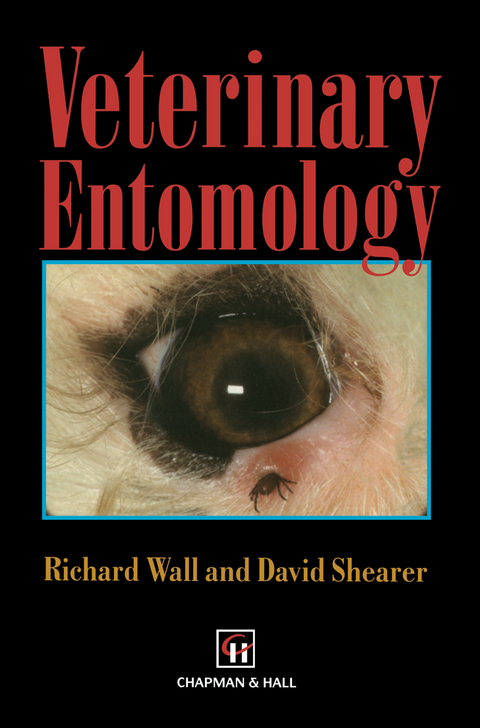
Veterinary Entomology
Chapman and Hall (Verlag)
978-0-412-61510-8 (ISBN)
1 The importance and diversity of arthropod ectoparasites.- 1.1 Introduction.- 1.2 Ectoparasite-host relationships.- 1.3 Ectoparasite damage.- 1.4 The evolution of ectoparasite-host relationships.- 1.5 A modern and growing problem.- 1.6 Arthropod structure and function.- 1.7 Patterns of arthropod development.- 1.8 The classification of diversity.- 1.9 The origins of arthropods.- 1.10 Living arthropod groups.- 1.11 Arthropod distributions.- 1.12 Further reading.- 2 Mites (Acari).- 2.1 Introduction.- 2.2 Morphology.- 2.3 Life history.- 2.4 Pathology.- 2.5 Classification.- 2.6 Recognition of mites of veterinary importance.- 2.7 Astigmata.- 2.8 Prostigmata.- 2.9 Mesostigmata.- 2.10 Further reading.- 3 Ticks (Acari).- 3.1 Introduction.- 3.2 Morphology.- 3.3 Life history.- 3.4 Pathology.- 3.5 Classification.- 3.6 Recognition of ticks of veterinary importance.- 3.7 Ixodidae.- 3.8 Argasidae.- 3.9 Further reading.- 4 Adult flies (Diptera).- 4.1 Introduction.- 4.2 Morphology.- 4.3 Life history.-4.4 Pathology.- 4.5 Classification.- 4.6 Recognition of flies of veterinary importance.- 4.7 Cyclorrhapha.- 4.8 Brachycera.- 4.9 Nematocera.- 4.10 Other Diptera of veterinary interest.- 4.11 Further reading.- 5 Myiasis.- 5.1 Introduction.- 5.2 Morphology.- 5.3 Life history.- 5.4 Pathology.- 5.5 Classification.- 5.6 Recognition of dipterous agents of myiasis.- 5.7 Oestridae.- 5.8 Calliphoridae.- 5.9 Sarcophagidae.- 5.10 Further reading.- 6 Fleas (Siphonaptera).- 6.1 Introduction.- 6.2 Morphology.- 6.3 Life history.- 6.4 Pathology.- 6.5 Classification.- 6.6 Recognition of fleas of veterinary importance.- 6.7 Pulicidae.- 6.8 Ceratophyllidae.- 6.9 Flea species of minor veterinary interest.- 6.10 Further reading.- 7 Lice (Phthiraptara).- 7.1 Introduction.- 7.2 Morphology.- 7.3 Life history.- 7.4 Pathology.- 7.5 Classification.- 7.6 Recognition of lice of veterinary importance.- 7.7 Amblycera.- 7.8 Ischnocera.- 7.9 Anoplura.- 7.10 Further reading.- 8 The control and treatment of ectoparasite infestation.- 8.1 Introduction.- 8.2 Diagnosis of ectoparasite infestation.- 8.3 The chemical control of ectoparasites.- 8.4 Mode of ectoparasiticide application.- 8.5 Problems with chemical control.- 8.6 Non-chemical control of ectoparasites.- 8.7 Cattle.- 8.8 Sheep.- 8.9 Horses.- 8.10 Pigs.- 8.11 Goats.- 8.12 Dogs.- 8.13 Cats.- 8.14 Small mammals.- 8.15 Birds.- 8.16 Further reading.
| Zusatzinfo | 121 Illustrations, black and white; 456 p. 121 illus. |
|---|---|
| Verlagsort | London |
| Sprache | englisch |
| Maße | 155 x 235 mm |
| Themenwelt | Naturwissenschaften ► Biologie ► Evolution |
| Naturwissenschaften ► Biologie ► Zoologie | |
| ISBN-10 | 0-412-61510-X / 041261510X |
| ISBN-13 | 978-0-412-61510-8 / 9780412615108 |
| Zustand | Neuware |
| Haben Sie eine Frage zum Produkt? |
aus dem Bereich


